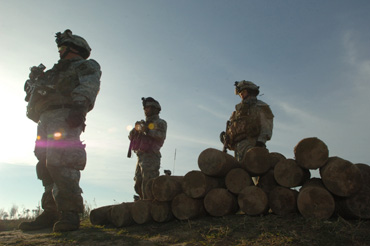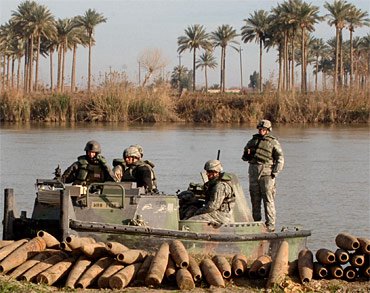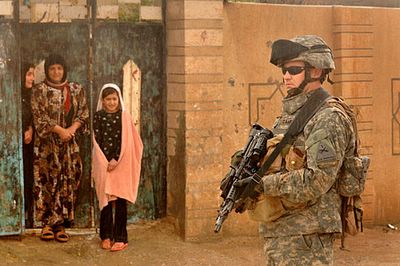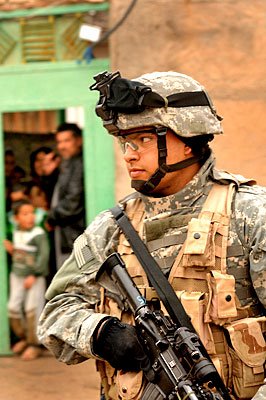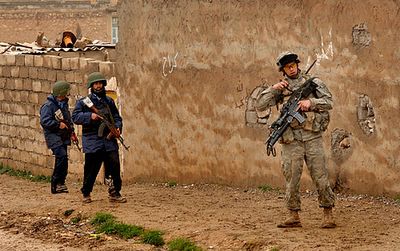Iraqi Security Forces Continue Progress in Quantity, QualityBy Samantha L. QuigleyAmerican Forces Press Service
WASHINGTON, Feb. 23, 2006 – Iraq now has 123,000 trained and equipped police officers, but numbers don't tell the whole story, a Multinational Force Iraq spokesman said during a briefing from Baghdad today.
"What we're seeing across Iraq is that the police forces are indeed gaining capability and gaining public confidence," Army Maj. Gen. Rick Lynch told reporters, adding that police forces are the coalition's focus this year. "They continue to grow in not just quantity, but in quality and capability."
The capability of all 232,000 trained and equipped Iraqi security forces -- including soldiers, border guards and police -- are improving, he said. Two of the 10 Iraqi army divisions are capable of assuming battle space and leading counterinsurgency operations, Lynch said. Improvements are expected to continue, he added.
"We are clearly on a great ... path to creating this domestic security force that can maintain domestic order and deny Iraq as a safe haven for terrorists," he said, adding that defeating the insurgency is about more than capable security forces.
"It's about improving the government's capability, it's about improving the economic situation, it's about improving the communications across Iraq," he said. "We're seeing improvements in that area as well."
The Iraqi people want to be able to go to work, send their children to school and live in a democratic society, Lynch said. This desire is in direct contrast to the insurgency's goal. "(The insurgents) can't stand the idea of a democratic Iraq," he said.
The Iraqi people, on the other hand, are actively rejecting the insurgency more frequently, even at the local level, Lynch said. This is causing the leader of the insurgency in Iraq, Jordanian terrorist Abu Musab al-Zarqawi, to change his tactics.
"We're dealing with a cowardly insurgency," Lynch said. "They've shifted their ... target to the Iraqi civilians and the Iraqi security forces and away from the coalition."
While the number of attacks this week, 555, didn't change from the previous week, they were more "successful," the general said. Twenty-three percent of the attacks resulted in casualties. Of those casualties, 60 percent were Iraqi civilians.
Not only has Zarqawi changed his targets, Lynch said; he's focusing his efforts on a tender Iraqi nerve: tensions between religious sects. Lynch cited letters recovered from a detainee as evidence that this was the motivation behind seven recent mosque attacks across the country, including on the Golden Mosque, a Shiite shrine in Samarra, a majority Sunni city.
The attack was meant to drive a wedge between the Shiite and Sunni Muslim sects because the cooperation of those two groups is the basis for a unified government, Lynch said. So far, Zarqawi has failed to achieve his objective because of the government's quick decisions to recall security forces on leave, post security at mosques and shrines, and call for calm through the situation, Lynch said.
"We're not seeing civil war igniting in Iraq. We're not seeing 77, 80, 100 mosques damaged. We're not seeing death in the streets," Lynch said. "We're seeing a confident, capable Iraqi government using their capable Iraqi security forces to calm the storm that was inflamed by a horrendous, horrific terrorist attack yesterday against the Golden Mosque in Samarra."
